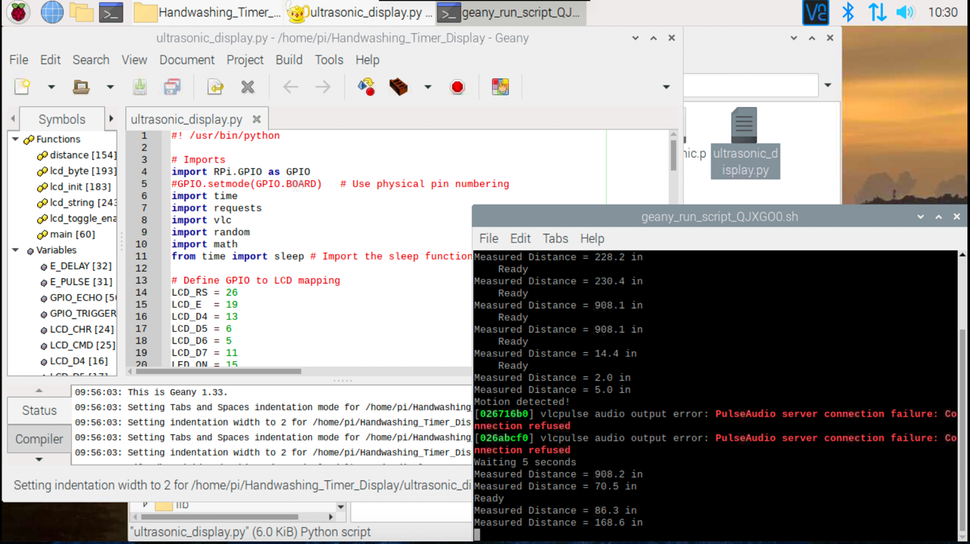
It is equipped with a backlight for easy reading. Each character is made from a matrix with 5×7 dots. It can display 16 characters per line on 2 lines. In this tutorial we are using the popular and quite basic 16×2 or 1602 LCD. To test if I2C is enabled, you can open a terminal window and enter following command : ls /dev/*i2c* Your Pi should respond with : /dev/i2c-1 Once the Raspberry Pi Configuration window opened, click on the tab “Interfaces”. For this we open: applications menu > Preferences > Raspberry Pi Configuration as shown in the picture below. Next you’ll need some extra components : – a breadboard (we are using a 400 points breadboard) – a 16×2 or 1602 LCD with I2C bus module – Dupont jumper wires – a T-cobbler (optional) – a 40 pin GPIO cable (optional) Visit our shop if you miss any components.īesides preparing the physical stuff, we need to configure our Raspberry Pi to be able to communicate with I2C peripherals.

If you’re not familiar with Python or with Thonny or GPIO-pins, I suggest to have a look at our tutorials “How to write your first Python program on the Raspberry Pi” and/or “How to use the Raspberry Pi GPIO pins” to have a quick introduction. We’ll use this user-friendly IDE to write our Python code. – First, you need to have a Raspberry Pi running on the latest version of Raspberry Pi OS. But if it is from a different type or it has no I2C module, you better look for another tutorial. You’ll just have to correct some parameters in the Python script. If your LCD is of the same type, but has a different size, it won’t be a problem to continue with this tutorial. The LCD has an IC2 module soldered on it (see the pictures below).


In this tutorial we are using the popular and affordable 1602 LCD.
#Thonny not responding how to
Learn with this tutorial how to connect and to program an 1602 LCD with a Raspberry Pi. If your display is equipped with an IC2 module, it’s not that difficult to connect an LCD display to a Raspberry Pi.


 0 kommentar(er)
0 kommentar(er)
